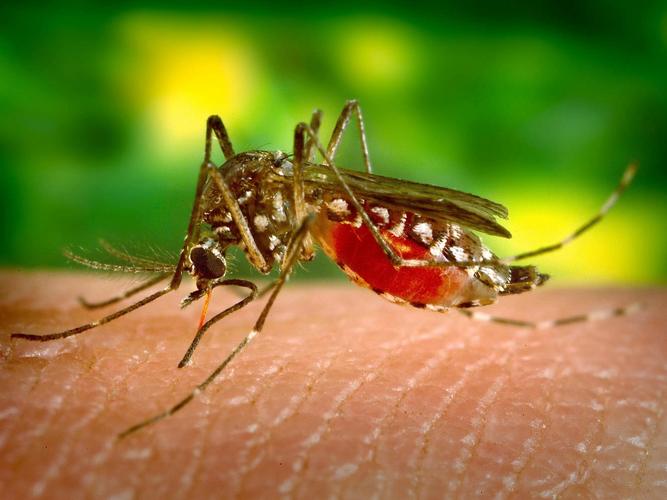In nature, survival and predation go hand in hand. Many animals hunt other creatures every day to survive. However, some animals are known for their efficient killing abilities, becoming the top predators in their ecosystems. So which animals kill the most other animals? Let's take a deep dive into a few animals that are shocking in their kill counts.

Annual kills: millionsAlthough mosquitoes may seem insignificant, they are one of the animals that cause the most deaths worldwide. Mosquitoes do not kill other animals directly, but rather by spreading deadly diseases such as malaria, dengue fever, and yellow fever. Every year, diseases spread by mosquitoes kill millions of people, especially in tropical and subtropical regions. According to the World Health Organization (WHO), malaria alone kills more than 600,000 people each year. This makes mosquitoes one of the world's deadliest animals.
Annual kills: hundreds of thousands to millions, the number of deaths of other species is incalculableHumans are not only top predators, but also one of the most influential species in nature. From hunting animals for food to large-scale wars and massacres, humans kill an incalculable number of animals directly or indirectly each year. In industrialized agriculture, fishing and hunting activities, humans have an extremely wide impact on other animals. At the same time, habitat destruction and climate change have further led to the extinction of a large number of species. Therefore, although humans are not considered "natural predators", they are undoubtedly one of the most destructive species on Earth.
Domestic Cats: Annual Killings of Animals Approximately Hundreds of Millions to Billions** Although domestic cats look docile, they are amazing predators. According to research, domestic cats kill billions of birds and small mammals worldwide each year. Especially in the absence of natural enemies, the hunting behavior of domestic cats in the wild has a huge negative impact on the ecosystem. Especially in places such as New Zealand and Australia, the hunting behavior of cats has directly led to the extinction of multiple local species.
Large cats such as lions and tigers are also top predators in the ecosystem. They usually hunt in groups and kill a large number of herbivores such as deer, zebras and antelopes every year.
Annual Kills: Hundreds to Thousands Orcas (killer whales) are the top predators in the ocean, known for their efficient hunting skills. Orcas hunt a variety of aquarium/52-marine-animals.html">marine animals, including fish, seals, dolphins, and even great white sharks. They have complex group collaboration capabilities that allow them to accurately pursue and kill prey. In Antarctica, orcas hunt seals with unique strategies, even flipping over ice floes to catch prey. Although orcas do not kill a large number of prey, their position in the marine ecosystem is unshakable.
Annual Kills: Hundreds to Thousands As the top predator on the African grasslands, lions kill a large number of herbivores such as zebras, wildebeests, and antelopes every year. Lions usually hunt in groups, using teamwork to capture prey larger than themselves. They are extremely efficient in hunting and are the "regulators" of the entire grassland ecosystem, maintaining ecological balance by controlling the number of prey populations.
Annual kills: hundreds to thousandsNile crocodiles are one of the deadliest predators in African rivers. Their hunting method relies mainly on ambushes. When prey approaches a water source, the crocodiles will quickly attack and use their powerful bite force to drag the prey into the water and drown. Nile crocodiles feed on a variety of mammals, including zebras, antelopes, and even humans.
Annual kills: hundredsWolves are highly social animals that hunt in groups. Individuals in a wolf pack work together to hunt prey that is larger than themselves, such as deer and moose. Wolves have a very high hunting success rate and kill a large number of prey in their territory every year, thus maintaining the survival of the group.
Annual Killings: Hundreds to Thousands of Human Deaths Each YearBees usually do not actively attack other animals or humans, but when they feel threatened, they will defend themselves by attacking in groups. Although the sting attack of bees has little effect on individual prey, large-scale swarm attacks can cause severe allergic reactions or even death. Africanized bees, in particular, are extremely aggressive and cause hundreds or even thousands of human deaths each year.
Annual Kills: HundredsAs the top predator in the ocean, great white sharks kill a large number of marine life every year, especially fish, seals and turtles. Although great white sharks occasionally attack humans, humans are not their main target. The bite force and agility of the great white shark make it almost have no natural enemies in the ocean.
Annual Kills: Millions of People Die Indirectly Every YearFlies and parasites do not kill other animals directly, but they become indirect "killers" by spreading deadly diseases. For example, sleeping sickness spread by tsetse flies and other parasite-borne diseases cause a large number of livestock and human deaths every year in Africa and other places.
From the smallest mosquito to the mighty killer whale, predators are everywhere in the animal world. Mosquitoes cause the most deaths due to the diseases they spread, but in human ecosystems, domestic cats and humans also affect the survival of other species on a large scale. Whether they are top predators or indirect killers, animals maintain ecological balance in various ways while also demonstrating the cruelty of the competition for survival in nature.
animal tags: Hunting Mosquitoes Flies
We created this article in conjunction with AI technology, then made sure it was fact-checked and edited by a Animals Top editor.